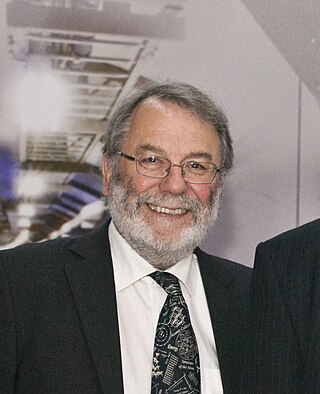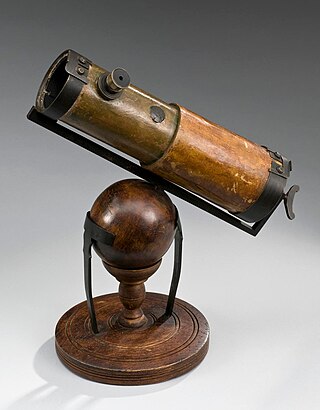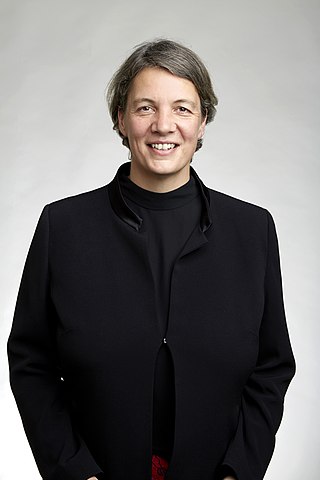Related Research Articles

The Cavendish Laboratory is the Department of Physics at the University of Cambridge, and is part of the School of Physical Sciences. The laboratory was opened in 1874 on the New Museums Site as a laboratory for experimental physics and is named after the British chemist and physicist Henry Cavendish. The laboratory has had a huge influence on research in the disciplines of physics and biology.

Brian David Josephson is a Welsh physicist and was professor emeritus of physics at the University of Cambridge. Best known for his pioneering work on superconductivity and quantum tunnelling, he shared the 1973 Nobel Prize in Physics with Leo Esaki and Ivar Giaever for his discovery of the Josephson effect, made in 1962 when he was a 22 year-old PhD student at Cambridge.

Sir Nevill Francis Mott was a British physicist who won the Nobel Prize for Physics in 1977 for his work on the electronic structure of magnetic and disordered systems, especially amorphous semiconductors. The award was shared with Philip W. Anderson and J. H. Van Vleck. The three had conducted loosely related research. Mott and Anderson clarified the reasons why magnetic or amorphous materials can sometimes be metallic and sometimes insulating.

Sir Richard Henry Friend is a British physicist who was the Cavendish Professor of Physics at the University of Cambridge from 1995 until 2020 and is Tan Chin Tuan Centennial Professor at the National University of Singapore. Friend's research concerns the physics and engineering of carbon-based semiconductors. He also serves as Chairman of the Scientific Advisory Board of the National Research Foundation (NRF) of Singapore.
Federico Capasso is an Italian-American applied physicist and is one of the inventors of the quantum cascade laser during his work at Bell Laboratories. He is currently on the faculty of Harvard University.

The Michael Faraday Medal and Prize is a gold medal awarded annually by the Institute of Physics in experimental physics. The award is made "for outstanding and sustained contributions to experimental physics." The medal is accompanied by a prize of £1000 and a certificate.

Sir Peter Leonard Knight is a British physicist, professor of quantum optics and senior research investigator at Imperial College London, and principal of the Kavli Royal Society International Centre. He is a leading academic in the field of quantum optics and is the recipient of several major awards including the Royal Medal from the Royal Society and the Thomas Young Medal and Prize from the Institute of Physics. He is a former president of the Institute of Physics and Optica, the first non North American-based person to take the position.
Alexander Rudolf Hamilton is with the School of Physics at the University of New South Wales (UNSW). He is notable in the area of experimental condensed matter physics, particularly semiconductor nanofabrication and the study of quantum effects in nanometer scale electronic devices at ultra-low temperatures.

The Isaac Newton Medal and Prize is a gold medal awarded annually by the Institute of Physics (IOP) accompanied by a prize of £1,000. The award is given to a physicist, regardless of subject area, background or nationality, for outstanding contributions to physics. The award winner is invited to give a lecture at the Institute. It is named in honour of Sir Isaac Newton.
The Nevill Mott Medal and Prize is an award presented in selected years by the Institute of Physics in the United Kingdom, for distinguished research in condensed matter or materials physics. It was first established in 1997 thanks to a donation from Sir Nevill Mott's family. Sir Nevill Mott was one of the outstanding British condensed matter theorists and won a Nobel Prize in Physics in 1977. He died in 1996. The award consists of a silver medal and a prize of £1000.
Donal Donat Conor Bradley is the Vice President for Research at King Abdullah University of Science and Technology (KAUST), Saudi Arabia. From 2015 until 2019, he was head of the Mathematical, Physical and Life Sciences Division of the University of Oxford and a Professor of Engineering Science and Physics at Jesus College, Oxford. From 2006 to 2015, he was the Lee-Lucas Professor of Experimental Physics at Imperial College London. He was the founding director of the Centre for Plastic Electronics and served as vice-provost for research at the college.

Michelle Yvonne Simmons is an Australian quantum physicist, recognised for her foundational contributions to the field of atomic electronics.
Bryan Ronald Webber, FRS, FInstP is a British physicist and academic. He was a Fellow of Emmanuel College, Cambridge from 1973 to 2010, and Professor of Theoretical Physics at the University of Cambridge from 1999 to 2010. He has been awarded the Dirac Medal by the Institute of Physics, the Sakurai Prize by the American Physical Society and the High Energy and Particle Physics Prize by the European Physical Society.

Gabriel Aeppli is a Swiss-American electrical engineer, co-founder of the London Centre for Nanotechnology, professor of physics at ETH Zürich and EPF Lausanne, and head of the Synchrotron and Nanotechnology department of the Paul Scherrer Institute, also in Switzerland.
The Katharine Burr Blodgett Medal and Prize is a gold medal awarded annually by the Institute of Physics to "recognise contributions to the organisation or application of physics in an industrial or commercial context." The medal is accompanied by a prize of £1000.
Shun Lien Chuang was a Taiwanese-American electrical engineer, optical engineer, and physicist. He was a Fellow of the IEEE, OSA, APS and JSPS, and professor at the University of Illinois at Urbana-Champaign.
Michael Christopher Payne is a British theoretical physicist, working in the field of computational physics and theoretical condensed matter physics at the University of Cambridge.

Jeremy John Baumberg, is a British physicist who is Professor of Nanoscience in the Cavendish Laboratory at the University of Cambridge, a Fellow of Jesus College, Cambridge and Director of the NanoPhotonics Centre.

James Floyd Scott was an American physicist and research director at the Cavendish Laboratory, University of Cambridge. He is considered one of the pioneers of ferroelectric memory devices. He was elected to the Royal Society in 2008.
Alexander Giles Davies is a professor of Electronic and Photonic Engineering at the University of Leeds.
References
- ↑ Heiblum, Moty; Stem, Ady (March 2000). "Fractional quantum Hall effects". Feature. Physics World . Vol. 13, no. 3. Institute of Physics. pp. 37–44. doi:10.1088/2058-7058/13/3/30.
- "Fractional quantum Hall effects". Physics World. 2 March 2000. Archived from the original on 29 August 2008.
- 1 2 "List of Fellows". Royal Academy of Engineering. Archived from the original on 21 May 2020. Retrieved 6 February 2019.
- ↑ "Highest honour for physicist". UNSW Newsroom. 22 November 2013. Retrieved 20 October 2023.
- 1 2 "PEPPER, Sir Michael". Who's Who 2014. A & C Black. December 2013. Retrieved 10 August 2014.
- ↑ "Semiconductor Physics Group". University of Cambridge. Retrieved 6 February 2019.
- ↑ "Cambridge Research Laboratory". Toshiba. Retrieved 6 February 2019.
- ↑ University of Otago, School of Pharmacy, Annual Report 2003/2004. Retrieved 2 July 2006
- ↑ "Professor Sir Michael Pepper elected to The Royal Academy of Engineering". London Centre for Nanotechnology. 29 July 2009. Retrieved 9 October 2021.
- ↑ "Sir Michael biography". Centre for Future Low-Energy Electronics Technologies. Retrieved 9 November 2017.
- ↑ Royal Society website. Retrieved 4 July 2006
- ↑ "Mott medal recipients". Institute of Physics. Retrieved 26 December 2019.
- ↑ Royal Society website: Royal Medal. Retrieved 6 May 2006
- ↑ Toshiba Research Europe: news article about Pepper's knighthood Archived 12 June 2006 at the Wayback Machine . Retrieved 6 May 2006
- ↑ "2019 Institute of Physics Awards — Department of Physics". University of Cambridge. 10 July 2019.